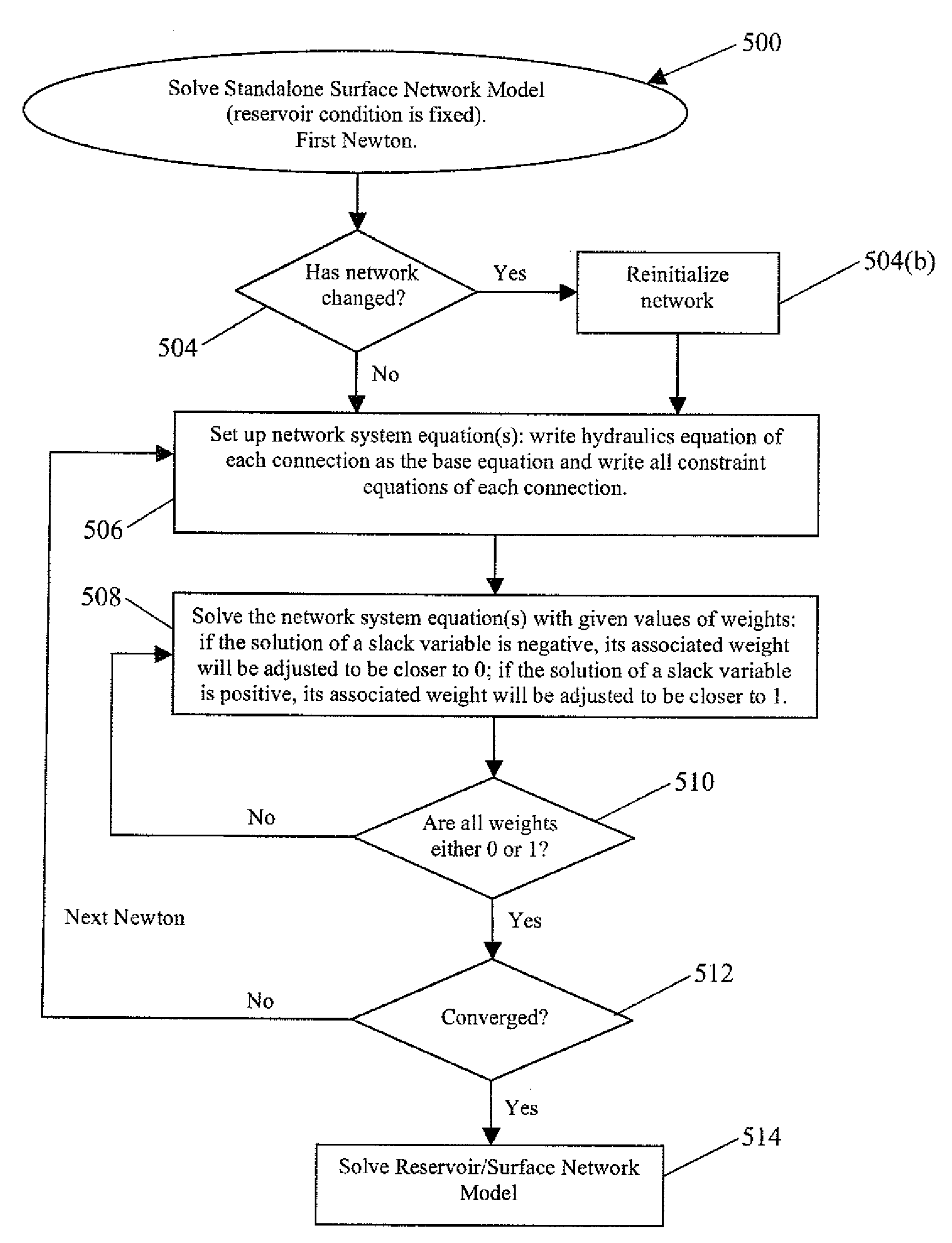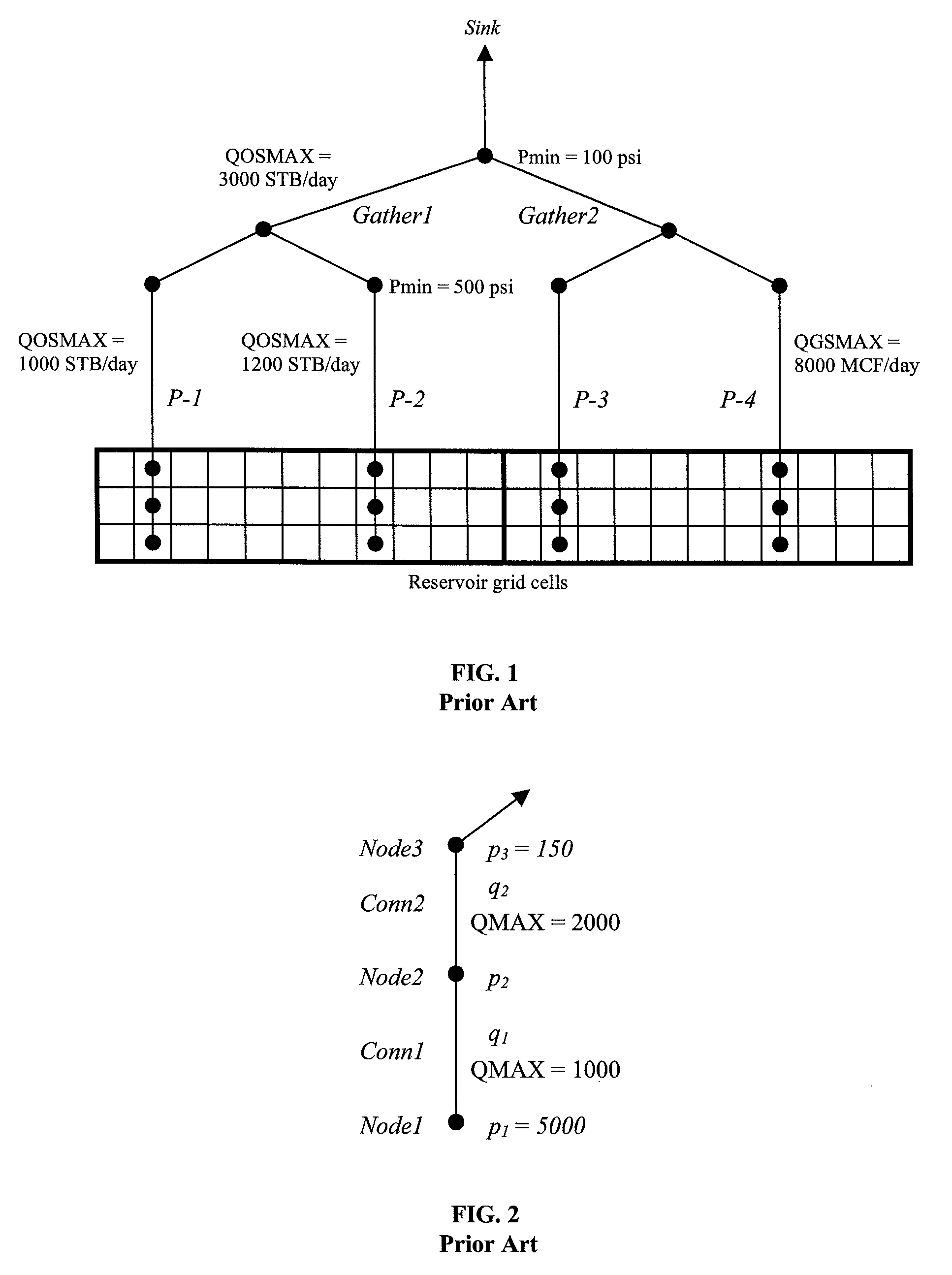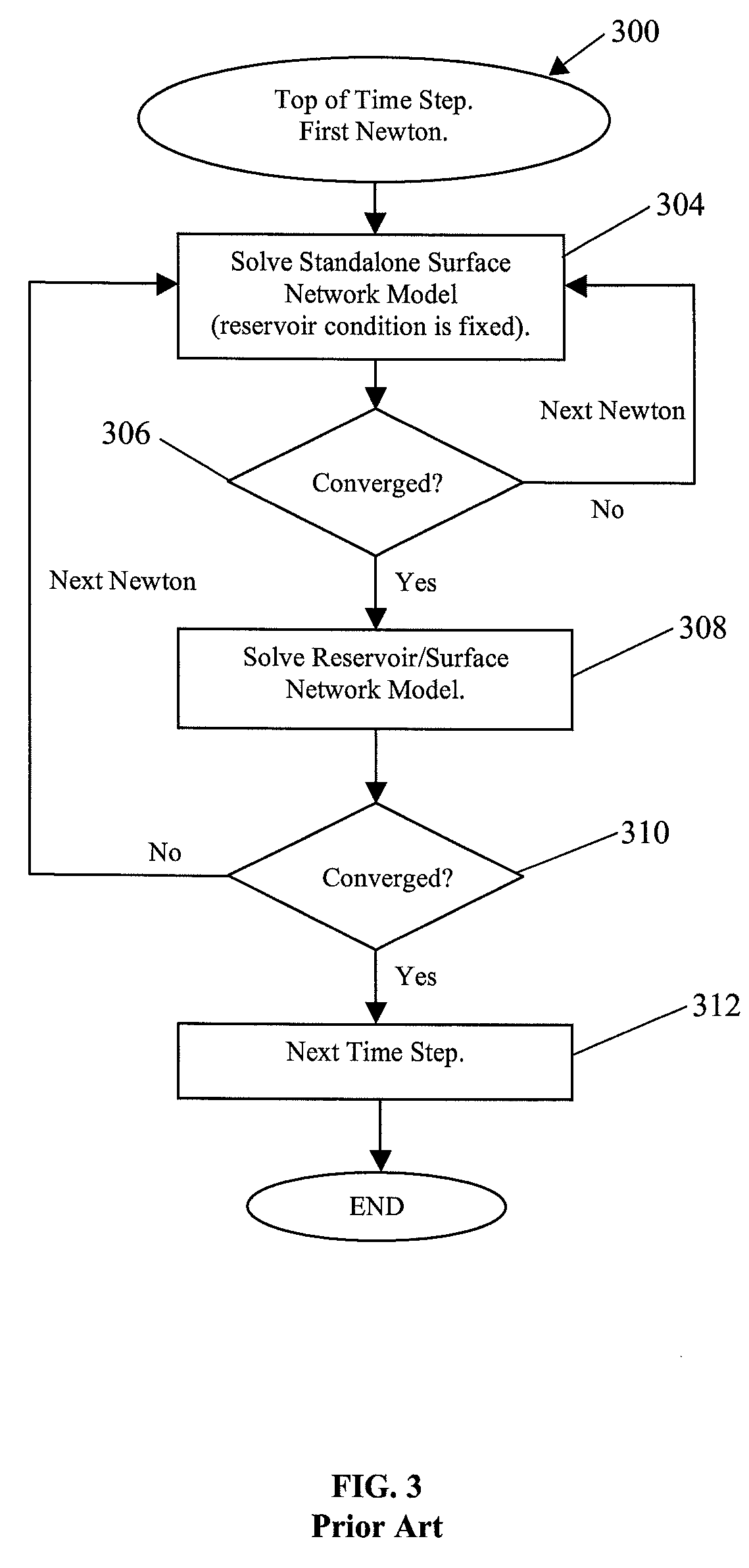Systems and methods for the determination of active constraints in a network using slack variables and plurality of slack variable multipliers
a technology of active constraints and multipliers, applied in the field of system and method for determining active constraints in a surface facility network, can solve the problems of network calculation in determining which of the possible constraints are active, prohibitively expensive simple trial and error approach, and certain constraints can be mutually incompatibl
- Summary
- Abstract
- Description
- Claims
- Application Information
AI Technical Summary
Benefits of technology
Problems solved by technology
Method used
Image
Examples
Embodiment Construction
[0037]The subject matter of the present invention is described with specificity, however, the description itself is not intended to limit the scope of the invention. The subject matter thus, might also be embodied in other ways, to include different steps or combinations of steps similar to the ones described herein, in conjunction with other present or future technologies. Moreover, although the term “step” may be used herein to describe different elements of methods employed, the term should not be interpreted as implying any particular order among or between various steps herein disclosed unless otherwise expressly limited by the description to a particular order.
[0038]A slack variable provides a way to ensure that a constraint equation is always satisfied. The slack variable is added to the constraint equation. Then, if the constraint is inactive, the slack variable takes up the slack—that is, it becomes the amount by which the inactive constraint equation as originally written ...
PUM
 Login to View More
Login to View More Abstract
Description
Claims
Application Information
 Login to View More
Login to View More - R&D
- Intellectual Property
- Life Sciences
- Materials
- Tech Scout
- Unparalleled Data Quality
- Higher Quality Content
- 60% Fewer Hallucinations
Browse by: Latest US Patents, China's latest patents, Technical Efficacy Thesaurus, Application Domain, Technology Topic, Popular Technical Reports.
© 2025 PatSnap. All rights reserved.Legal|Privacy policy|Modern Slavery Act Transparency Statement|Sitemap|About US| Contact US: help@patsnap.com



